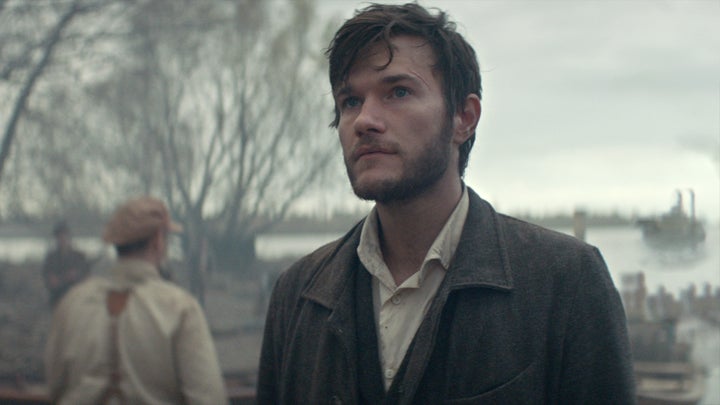
I have written about Super Bowl commercials for years, whether it's the obligatory “Best of” or going behind the scenes. But nothing in my 25 years in the business prepared me for this year's crop. This was the year of advertising as protest and it was clearly directed at the Trump Administration’s Muslim ban. No one should minimize the impact of this because it has opened a possible new rail in political activism and an entirely different semiotic space for premium advertising. In particular, there were two ads that may be among the best I've ever seen in this category and functioned more like corporate-sponsored short films than sales prompts. If you're tempted to lump this with previous eras of message ads, you shouldn't. These were different. The best of this year's ads weren't refracted through a commercial impulse; in other words, the cause in play wasn’t served or resolved by an act of consumption (think of the famous Coke jingle, "I'd like to buy the world a Coke" promoting plurality). This year the cause, not the consumer, was the point.
Before we get to the winners, let’s deal with the rest. In light of the fractiousness of our political landscape, Madison Avenue’s slick seemed ill-placed and frivolous. Tide, Kia and Skittles all served up the usual tongue-in-cheek piffle and it landed like an over-familiar joke. Alfa Romeo gave us three different ads and each was competently made but entirely tone deaf. This isn't the year for maximalism; we don’t want to hear about "riding on the backs of dragons" at a time when grandiloquence and bombast are being contested. As far as cars, Ford's Go Further spot did better with the most breathless piece of editing since Toyota's marvelous 2016 ad, ending pleasingly on a shot of someone bicycling through traffic (a form of dissension).
So, what were the best?
1. Budweiser's "Born the Hard Way"
The ad that attracted more than 21 million views on YouTube (more than twice its nearest competitor) by the Monday after the game was also one of the best. This sprawling commercial is a landmark, formally because it is one of the very few that elides the aesthetics of advertising completely. This has none of the high-key cinematography and ripeness of prestige ads. This is, instead, the origin myth of a company -- the story of Adolphus Busch’s immigration to the U.S. from Germany in the 1800’s -- rendered like a feature film. Directed by Chris Sargent at Anonymous Content, it may remind you of Sergio Leone's Once Upon a Time in America; Anthony Minghella's Cold Mountain; and, more recently James Gray's The Immigrant. Instead of agency backlighting and over-saturated colors, we get lots of blacks and painterly chiaroscuro; instead of the usual bright, insistent music, we get a dark symphonic score. Compare this to Coke's “America the Beautiful” or Google's Home ad, both of which are beautifully shot but still inhabit the alternate universe of B2C feel-good. The only thud was the line “I want to brew beer” early on which ruptured the filmic spell. Outside of that, this is first rate.
2. 84Lumber’s “The Journey”
Building supply company 84 Lumber's 3-minute epic went further than Budweiser in departing from ad conventions. Where Budweiser created a microcosm of the European immigration experience, this was the Mexican-American odyssey writ large and ending at Trump’s proposed border wall. The entire film, viewable online, is close to six minutes, recalling everything from Gregory Nava's El Norte to Alejandro Iñárritu’s Babel, the virtue of this ad was its patience. Across its running time, we see the things we never do in advertising -- exhaustion, desolation and despair (it’s also striking that both ads feature moving performances from its principal actors). This is beautiful work by the Brunner agency and their team, including director Cole Webley. And, like the Budweiser ad, music plays a central role with a haunting piece by Future Perfect that reminded me of Gustavo Santaolalla’s work on the Motorcycle Diaries. What made this ad even more arresting is how hard it is to unpack its motivations. “For 60 years, this has been a company defined by its people, entrepreneurs who see opportunity where others don’t,” said Maggie Hardy Magerko, 84 Lumber owner and president. “That’s why we’re casting a wider net; we want the world to know 84 Lumber is the place for people who don’t always fit nicely into a box.” The fact that 84 Lumber’s CEO, who commissioned this extraordinarily empathetic portrait of Mexican immigrants, is a Trump supporter further problematizes this spot but also makes it challenging, provocative work that invites discussion.
So, what can we glean from this current phase of advertising? I once wrote about the extraordinary print campaign for Celine that featured Joan Didion as a watershed because “it short circuits our smooth bourgeois impulses and taps into much more human, unruly experiences – exhaustion, boredom, even grief (Joan Didion famously wrote a memoir of sorrow called The Year of Magical Thinking). This is original and unapologetic.” I think we could very much say the same thing about what 84Lumber and Budweiser created this year. This is salutary for our culture because large corporations have the resources and reach to use visual storytelling in very efficacious ways. At a time when fake news and reportage is under attack, advertising as short-form cinema could be a new way to create public reflection where cable news creates argument. Could we be looking to advertising as a new form of corporate social responsibility?
